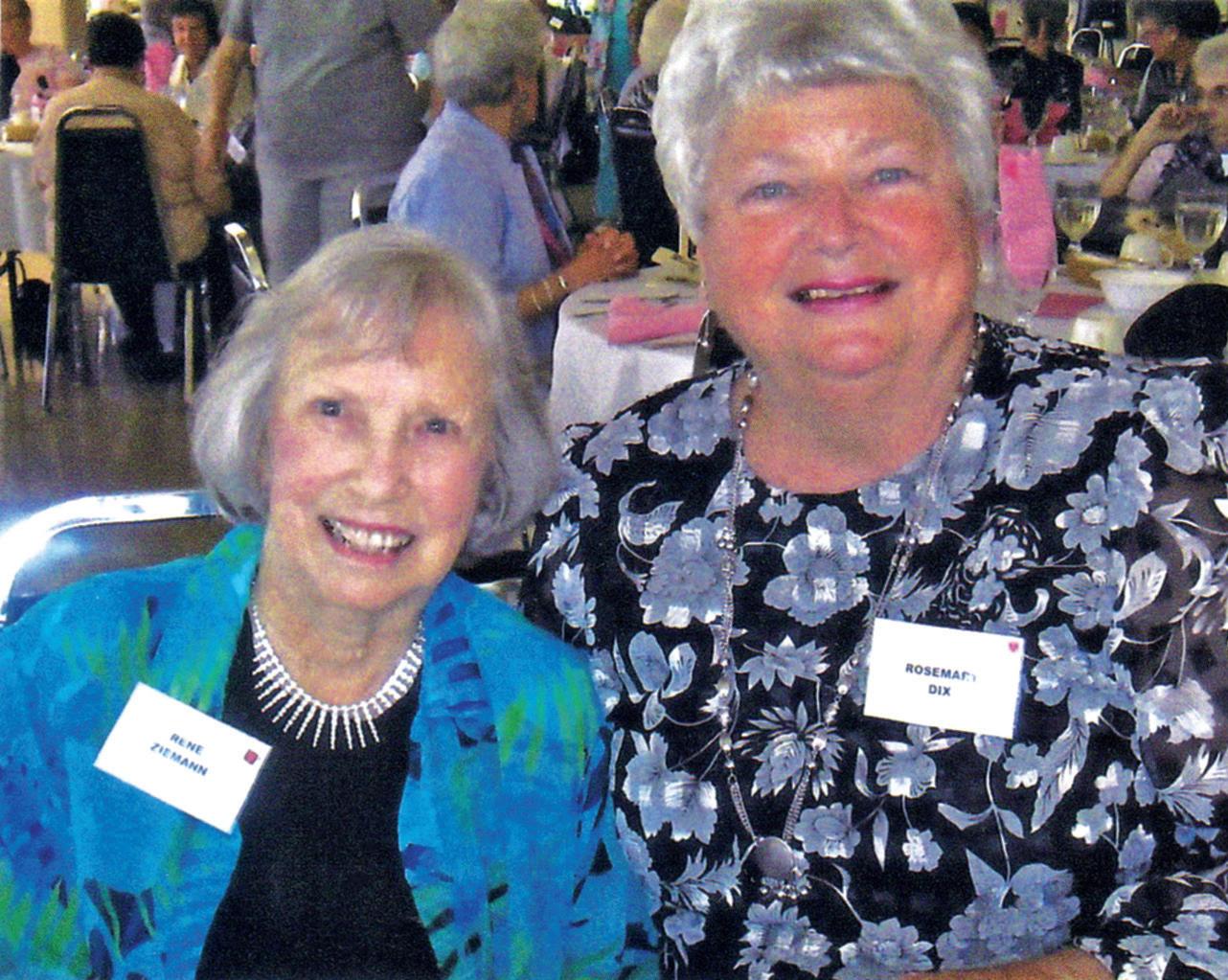



















John Hausdorff, MD Dennis Niekro, NP Zach Koontz, MD Debbie Branson, NP Nancy Rubin, DO Ashley Sandridge, NP Nancy Tray, MD
Mallory Sandridge, NP Lulu Zhang, MD





Jenna Weatherson, NP Katrina Fisher, MD
Jillian Castor, DNP Denise Licini, NP Dorothy Tenney, PhD



Roger Shiffman, MD Emeritus


WINTER 2022-23


Bill Tindall didn’t get his start on stage until he was 53, when he decided to take a stab at his acting chops with Gilroybased Pintello Comedy Theater.

He quickly realized he had found a new passion.
“The minute I stepped on stage and people started laughing when I did something funny, I was like, ‘oh, I’m hooked,’” he said.
BY ERIK CHALHOUBTindall joined South Valley Civic Theatre in 2008, who has performed in many shows for the local theater group and is also its warehouse manager, a critical position behind each and every production.
Whenever a show ends its run, it begins a
Bill Tindall is part of theater group’s ‘huge family’ELIZABETH MANDEL SHOWTIME Bill Tindall starred as the Emcee in South Valley Civic Theatre’s “Cabaret” performed earlier in 2022.





««
meticulous process that many theater-goers don’t see.
The sets, costumes and numerous props are loaded up into boxes and transported from the Morgan Hill Community Playhouse to a warehouse in the city, where they’ll stay until they’ll be needed in some shape or form for a future show.
But storing these items is nowhere near as simple as shoving a box into a corner. No, each item will have to be removed separately and placed into its designated space by category.
And there are categories. So many of them.
From wigs to slacks, door handles to replica weapons, phones to typewriters, street lamps to baskets, and chairs to stairs, South Valley Civic Theatre’s warehouse is teeming with countless props, costumes and set pieces that cover eras from Victorian times to the present day that the theater group has amassed over its five decades of existence.
When a producer needs a specific item for a show, they will first reach out to Tindall, who can track down anything within the menagerie of wood, fabric, plastic and paper.
Tindall estimates a couple thousand costumes hang near the ceiling, where containers of more specific clothing items are stacked beneath them, each labeled such as “short skirts,” “men’s black pants” and “Christmas.”
He stressed the importance of having pieces relevant to the period of each play. You wouldn’t find an iPhone in a show set in the 1990s, he noted
as he held up a bag of early-day brick cell phones and flip phones, while standing next to a shelf with typewriters from various decades.
Even as the last show is being put away, multiple others are being conceptualized, designed, auditioned and rehearsed at the same time. It’s even more hectic inside the warehouse now as SVCT performs shows across two venues: the Morgan Hill Community Playhouse and Limelight at the Gilroy Center for the Arts.
Tindall said he enjoys being a part of the three- to four-month-long process for each show, as activity slowly but surely ramps up in the warehouse as opening night approaches.

“I’m in here a lot by myself,” he said. “When a show comes in, we have the auditions, then the rehearsals start. Then all of a sudden the shop gets busy. It just starts layering in. It’s a huge family.”
SVCT is hoping to grow that family with more volunteers.
Anyone who wants to pitch in with the numerous aspects of theater are encouraged to become a member of SVCT or check out the volunteer opportunities at svct.org/volunteer.


“Anybody who wants to help in the theater, backstage, warehouse … the best way is to become a member,” Tindall said. “Then all you have to do is show up, and say ‘I want to help. I can do this. I’m a body, tell me what to do.’”
Tickets for upcoming shows can be purchased at svct.org.







One of the fastest-growing sports in the nation now has a home in Morgan Hill, as the city and a group of athletes recently combined their efforts to open three public outdoor pickleball courts at a local park.
The city and local pickleball enthusiasts celebrated the grand opening of the courts June 7. The new pickleball venue is, in fact, located on the basketball courts at the Morgan Hill Community Park off West Edmundson Avenue—between the dog park and new Magical Bridge playground. The courts are shared between players of both sports, open to pickleball in the mornings and early afternoons (sunrise to 2pm) and basketball from 2pm until sunset.
The courts are a temporary answer to the growing demand for pickleball facilities in Morgan Hill. Public Works Director Chris Ghione said the Morgan Hill Parks and Recreation Commission is working on a long-term plan to find a location for permanent pickleball courts.

Before the city agreed to open the basketball courts for part-time pickleball—which included painting regulation lines to designate three separate playing
surfaces—local players traveled out of town to play the sport outdoors. Indoor courts are already established at the city’s Centennial Recreation Center.
One of those players, Sherry Hemingway, even built a pickleball court in her driveway with chalk and a net earlier this year.
“Our players are delighted to be able to play pickleball near their homes and not have to drive to San Jose or Gilroy to play,” Hemingway said.
“The group that worked so long to get the courts is planning to form the Morgan Hill Pickleball Club, which will encourage the sport, organize events, fundraise and advocate for the expansion of the sport locally. Their current focus is offering volunteers to give free pickleball lessons to beginners.”
Hemingway described pickleball as “an addicting sport played with a net, paddle and whiffle ball. It is multi-generational in nature, and it is common to see parents, kids and grandparents playing together.”
She said she just started playing the sport earlier this year at the indoor CRC courts. One inviting aspect of the game seems to be that experienced players are always eager to teach beginners how to play, she said.
After producing her own makeshift outdoor court and inviting the enthusiastic local pickleball community, Hemingway’s driveway became “the Saturday morning Driveway Pickleball Clinic, a haven for beginners,” she said.
“It also sparked the recognition that Morgan Hill was the only community in the area without outdoor pickleball courts,” Hemingway added. “Our Saturday numbers quickly swelled to 15 players, and included one person with a knee replacement and four people who had never held a racquet.”
A small group of local pickleball players reached out to the city last fall to ask about establishing outdoor courts on public property, Ghione added. While considering the options, Ghione said it became apparent that the Community Park’s basketball courts were not seeing much use in the mornings. Thus the site made sense as a part-time, temporary pickleball surface.
The city’s costs in creating the courts were minimal, Ghione said, consisting of a few hours of staff time, some paint for the lines and nets.
According to a March article on cnn.com, at least 4.8 million people play pickleball in the U.S. That number is a nearly 40% increase over the past two years, as participation has spiked since the pandemic started.
Hemingway said anyone interested in taking up pickleball in Morgan Hill can text 408.234.7871 to make an appointment for a lesson.




While only six years old, Lightpost Winery has decades of experience— and talent—behind it.

From the first vintage, awards began consistently rolling in. Proprietor Sofia Fedotova and Winemaker Christian Roguenant were thrilled to be awarded Wine of the Year at the 2022 Monterey Wine Competition for their 2019 Lightpost Winery Cabernet Sauvignon Reserve, made from Paso Robles fruit.
It scored 97 points and was awarded a Platinum medal. In addition, Lightpost had eight additional Platinum- and Gold-winning wines, as well as four that scored Silver.
“We are very honored to have received this award and to be recognized by this prestigious competition that features many wonderful wines and wineries,” Fedotova said. “It is a great acknowledgment of our hard-working team and our efforts to create some
Christian Roguenant brings experience to Lightpost Winery


outstanding wines that people enjoy. We are looking forward to a bright future for Lightpost Winery and many more amazing wines to come.”
Visitors can find Lightpost in Morgan Hill, in a small industrial park off Highway 101 at 900 Lightpost Way. Fun fact: the tasting room and winery occupy the former offices and warehouse space of one very famous artist, Thomas Kincade.
The tasting room is open Wednesday-Sunday, from 11am until 6pm. The age limit for this room is 21-plus. There is a separate family room available for those with children. The tasting room is dog-friendly.
For Roguenant, achieving an honor like this is a gratifying affirmation of his lifelong success in the wine business. Arriving in the U.S. from France with a little English and even fewer dollars, he stepped off a bus to make his first purchase of snack foods at a convenience store. When he went to pay for the Coca-Cola, the checker asked, “Paper or plastic?” He thought they were asking whether he was paying by credit card or with paper money.
Fast forward 40 years and he has had the chance to pay for plenty of experiences with both, many times over. But one thing has always guided him, and that is making the best possible wine out of carefully farmed grapes, because that’s where it all starts.

Roguenant began his U.S. career at Champagne Deutz in Arroyo Grande, which was a partnership between a wealthy French businessman and Beringer USA. He was with the company from 1986 to 1997.
“I loved California and the opportunity,” Roguenant said. “The Frenchman from Versailles who owned the land and the winery building kept charging more and more money for the grapes, which caused Beringer to become pissed off.”
The partnership dissolved in 1993, leaving him president of the company, which was renamed Laetitia, after the French owner’s daughter. Roguenant says that Roederer actually acquired the Deutz name and wanted to buy the facility but the price was too high, which is why they ended up going to Philo, in the Anderson Valley. Eventually, the French owner, whose father had made millions importing coffee beans from the Ivory Coast, wanted to sell the facility and it was time for Roguenant to move on. Although he had job offers from Opus One, he was intrigued by the opportunity presented by the Niven family to build a dream winery.
“I knew Tim and Michael Mondavi, but they were only making one wine at the time, which I thought was too boring,” Roguenant said. “The Niven’s gave me $4 million to design and build a winery. I was there for 20 years and then sold the business, after which I took time off and eventually met Sofia.”
He actually wasn’t loafing around in the meanwhile, though, instead keeping busy with winery projects in Australia and in the Loire, where he was making sparkling wine from Chenin Blanc.
While Roguenant himself loves Chardonnay and Pinot Noir, Fedotova enjoys big bold reds: hence the Cabernet Sauvignons from Paso Robles vineyards like Onyx in Templeton and Old Oak in the Willow Creek district.
Having been in the area for 37 years, Roguenant knows the vineyards and the people who farm them.
“Old Oak is on a slope and faces east and is 40 years old, from old clonal material, whereas Onyx is a new generation of planting, in a flat area with more sandy soil,” he said.
He also gets some grapes from the Derby Vineyard in Paso.
Lightpost also sources Cabernet from Bates Ranch and Zayante Vineyards in the Santa Cruz Mountains. These Cabs are named in honor of Fedotova’s family. Roguenant says the 2019 Sevastien Cabernet Reserve Santa Cruz Mountains (Silver) is from the Zayante Vineyard, and is 75% Cab Sauv and 25% Merlot. It’s named for Fedotova’s eldest son.
The 2019 Rion Reserve Cab (Gold, 93 points) also hails primarily from the Zayante Vineyard, with a tiny bit of Petit Verdot coming from Onyx. Rion is her younger son Teo’s middle name and means “Little King.” The 2019 Alexander Reserve, Paso Robles, (Gold, 91 points), is Cabernet, made of 85% Old Oak with 15% Petit Verdot from Onyx Vineyard. Alexander is a tribute to Fedotova’s father's name, which means, “Defender of the People.”
Also from the Santa Cruz Mountains comes two of their Pinot Noirs, one from the Ferrari Vineyard and one from Saveria Vineyard. The 2019 vintage of the latter just scored 94 points from Wine Enthusiast. They scored Silver for their 2020 Spanish Springs Pinot Noir from SLO, and Gold for their 2020 Winemakers Select Pinot Noir, which contains a bit of Edna Valley fruit from a vineyard that was subsequently torn out, to complement the Spanish Springs.
Roguenant says the harvest of 2020, with the fires and the relentless scorching heat was the worst thing he’d ever witnessed from a grape-growing perspective.
“When the fires broke out, I called the majority of vineyards where we were planning to buy fruit and said, ‘no thanks, please sell the fruit to someone else,’” he said. “We took less than 50% of what we normally get. We did 30 tons in 2020, but 80 tons in 2021.”
One thing they did make more of in 2020 was sparkling wine.
“We picked the second week of August before the heat,” Roguenant said. “It turned out to be very good sparkling, even though it wasn’t a good vintage overall.”
They made three sparklings in 2020, including a sparkling rosé from Spanish Springs, a Blanc de Blancs from Spanish Springs and a Brut from 50% Chardonnay and 50% Pinot Noir from the Edna Valley vineyard that no longer exists. These sparklers, for which the base wine is made at Tooth & Nail in Paso Robles, will be released in the fall of this year.
A friend of Roguenant, who was a winemaker for Schramsberg, has a special bottling truck for handling sparkling wine, which is based in Napa. He brings the truck to Paso to do the bottling, after which the wine is shipped to Lightpost in Morgan Hill. There, it is aged and riddled.
When ready to be disgorged and finished, the bottles are then shipped back to Paso, where the wine is disgorged, and the dosage is added. The wine is then corked and finished with a wire hood and foil, and shipped back to Morgan Hill.
Yes, that’s a lot of work: work that most wineries are happy to hand off to a larger sparkling house to handle. But, says Roguenant, “If you want to do a good sparkling, you have to do it yourself. I learned this in France.”
This is some well-traveled sparkling, not unlike its prodigious maker.









Gilroy Lodge on the Hill resounded with laughter on December first when more than 100 attendees gathered to celebrate the holiday season, each decked out in festive apparel. The enthusiasm was palpable as members of Women In Touch (WIT) adorned every table in the banquet room with smiling faces and lively discussions.

Women from all walks of life, lawyers, stewardesses, housewives, bakery owners, bank managers, just to name a few, make up this social group which began over 36 years ago. The concept for WIT started with a discussion between five friends from Gilroy and Morgan Hill, Jeanne Bennington, June Lightly, Wilma Muyon, Verena (Rene) Ziemann and Rosemary Dix, 85, the only surviving member of the group, got together to discuss creating a social club for women similar to the club, SIRS (Sons in Retirement), some of their husbands belonged to.
Not long after they met, the club’s by-laws were established.
Women gather for social activities for nearly four decades

“With foresight, our founders realized a need to bring together old friendships and meet new ones in South County,” Dix said.
And with that, Women In Touch was founded with its first meeting taking place on May 1, 1986, at the Gilroy Lodge on the Hill. Dix recalls a total of 70 women were in attendance, evidence of the need for such a group.
“It grew so rapidly it just almost doubled each time,” Dix explained, adding the name emerged from the main intention of the group, women wanting to stay in touch with one another.
More than three decades later the group hosts a membership that spans a 50-year age range, proof that age holds no barrier as the comradery is evident in the smiles and laughter when they gather for their monthly meetings.
The group’s eldest member, Ann Jaszewski, who recently turned 102, states it best.
“I like the atmosphere, everybody is friendly and nice, and it just gives me a good feeling to be there,” Jaszewski said. “All this turmoil we have in the world today, while you’re there, you don’t think about it.”
One of Jaszewski’s favorite memories is being taught dance lessons from a WIT member and former dancer with the New York City Rockettes. She will never forget a performance featuring a maypole that didn’t go quite as it should have.
“It was hilarious, we ran into each other. If you miss one step, you never get caught up again,” Jaszewski said. “It ended with the whole maypole falling over, everybody was laughing their heads off, it was so funny.”
A member for the past 25 years, Sharon Welin, 81, is the current entertainment chair, a title she shares with Gert Sallowfield, and a role she is clearly suited for.

“All my friends want to turn around and run when I say, ‘I’ve been thinking,’ because they know I’m going to come up with something crazy for them to do,” Welin said, with a grin.
Three years after its conception, Sophie Gluhaich, 88, joined WIT. She’s held several positions including treasurer, vice-president and president.
“I was in everything,” Gluhaich said.
Some of her favorite memories involve the Golden Girls skits.
“We recreated the set of the show, my sister Georgina literally copied the Golden Girls script, word for word, and we acted it out. We did one show a year and I played Dorothy,” Gluhaich said, with a laugh that echoes Bea Arthur’s, the actress who portrayed Dorothy on the beloved sitcom.
Six years ago, current WIT president, Fran Hopkins, joined the group with a specific goal in mind.
“I really wanted to find a group of people I could go play with,” Hopkins said.
It was certainly the right choice as the group’s mission statement aligns perfectly with her goal: “The main purpose of this organization is solely to have fun.”
Hopkins found much more than playmates; she found meaningful relationships.
“As you get older, you retire, people move away, and so your social circle shrinks when you need it the most,” Hopkins said. “You have spouses pass, children having problems, and it’s a real support, all these women going through the kind of things you’re going through. It’s also given me people who are going through things that I haven’t gone through yet and I know if that happens to me that I’ve got people there to help me through it. It’s really wonderful knowing that.”
For more than 10 years, Frances Scalzo was her husband’s caregiver before he succumbed to Parkinson’s. The former English professor joined WIT after attending a luncheon with her friend where she realized the group included a lot of ladies who were going through the same circumstances as her.
“There is a certain appreciation that I’m not the only one going through this passage,” Scalzo said.
“They understand if you have a moment when you’re down. The camaraderie is important… and we can come here and be ourselves. It’s an opportunity for women to share happiness or sadness, disappointments, or grief, because we’ve all had some of that.”
Priscilla Blissmer, 79, wholeheartedly agrees.
“There’s a friend next to you all the time,” she said.
For 26 years, Viola Carr, 88, has attended the monthly luncheons.
“I love it, every month I look forward to it,” Carr said.
Dee Knapp, who joined in 2013, loves the activities.
“People are very, very creative. Every meeting is very interesting, it’s never the same,” she said.
As was the case for all social gatherings, when the pandemic hit the monthly meetings shut down, as well as the other group activities WIT offers its members: poker games, Bunko and Bocci ball. For 16 months the Elks Lodge was no longer occupied by the ladies of WIT. The laughter, silenced. The in-person meetings, restricted. The meaningful connections, halted.
“It was devastating for a number of the women because they relied on the group for a lot of their social activities,” Hopkins said. Several members expressed to her that WIT was the entirety of their social life.
For Jaszewski, it wasn’t so much the meetings she missed.
“It was just to see all my old friends, I was so happy when they came back,” she said, smiling. “I appreciate it so much that we have this nice group.”










